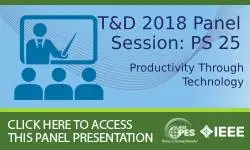-
Members: FreePES
IEEE Members: $10.00
Non-members: $20.00Pages/Slides: 71
05 Aug 2012
Conservation Voltage Reduction (CVR) or voltage optimization refers to optimizing the service voltage for the purpose of reducing power and/or energy consumption. Although CVR has been studied for many years, it has got renewed attention because of increasing emphasis on improving distribution efficiency. Recent studies by Northwest Energy Efficiency Alliance NEEA and Electric Power Research Institute (EPRI) have shown CVR as one of the most attractive energy savings investments in terms of kilowatt-hour saved. With the advancement in CVR related technology, many utilities have or are in the process of implementing CVR on their feeders. The critical question is how to quantify the benefits of CVR for a given distribution feeder. A lot of research is being done in this area to come up with approaches to quantify the energy savings and CVR factors (defined as percent reduction in load consumption divided by the corresponding percent reduction in voltage). This panel session provides an overview of Model and Verification (M&V) work performed by the panelists on the real world distribution feeders with focus on field trials for data collection, field data analysis, and simulation and analysis performed on some of the feeders in order to quantify the benefits of CVR.
Chairs:
Anish Gaikwad
Sponsor Committees:
Transmission and Distribution Committee


